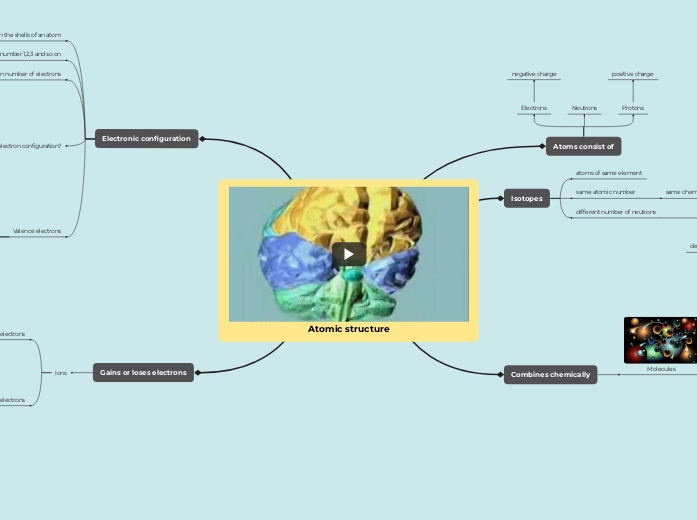arabera Mindomo Team 12 months ago
304633
Atom structure

arabera Mindomo Team 12 months ago
304633

Honelako gehiago
ions are positively charged
metals
cations
ions are negatively charged
non-metals
anions
4-8 non-metalic
1-2 metallic
aliminium with 3 is an exception
atoms of same elements
phosphorus
chlorine
oxygen
hydrogen
nitrogen
atoms of different elements
hydrochloric acid
carbon dioxide
water
ammonia
methane
boilling point
melting point
density
same electronic configuration of both isotopes